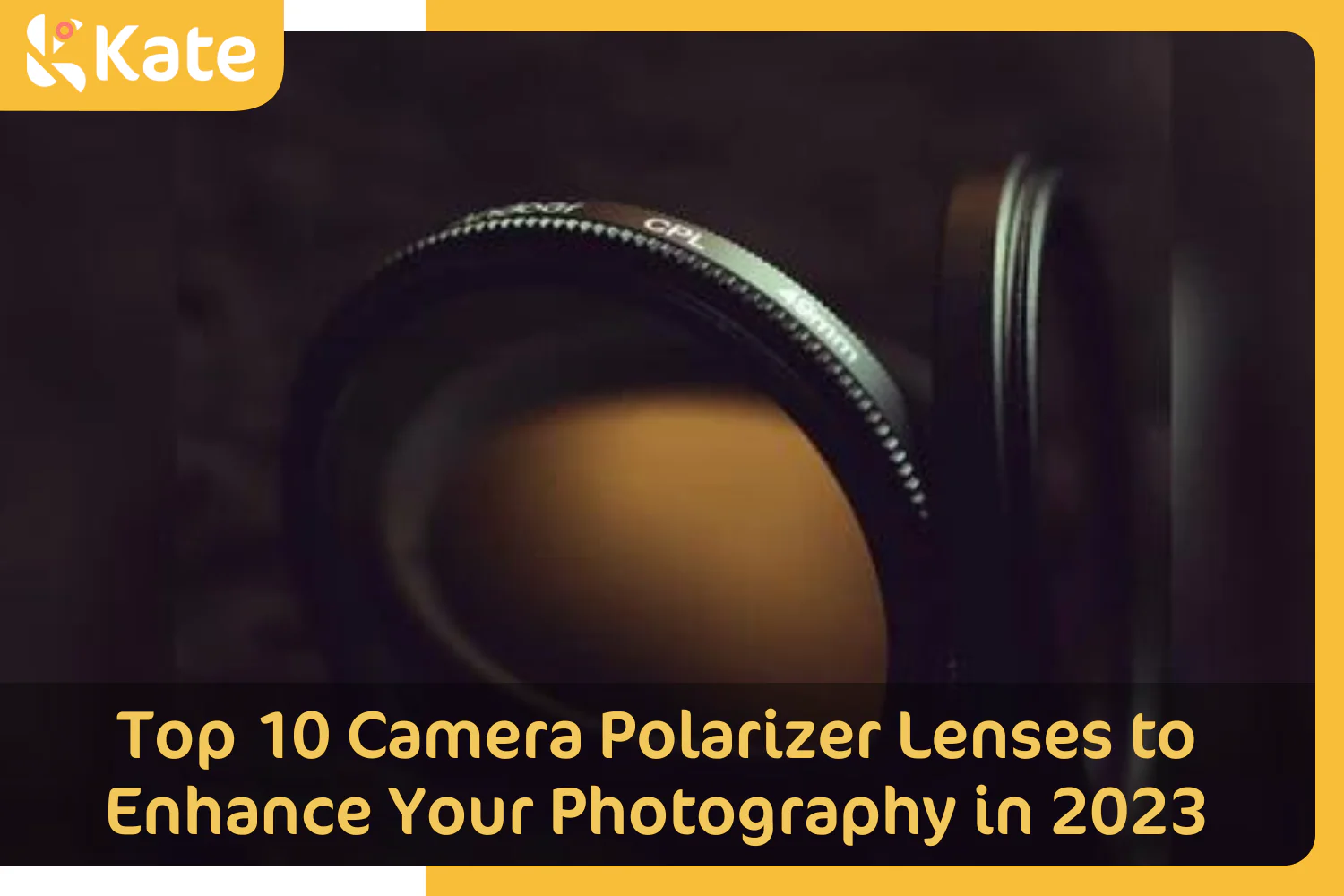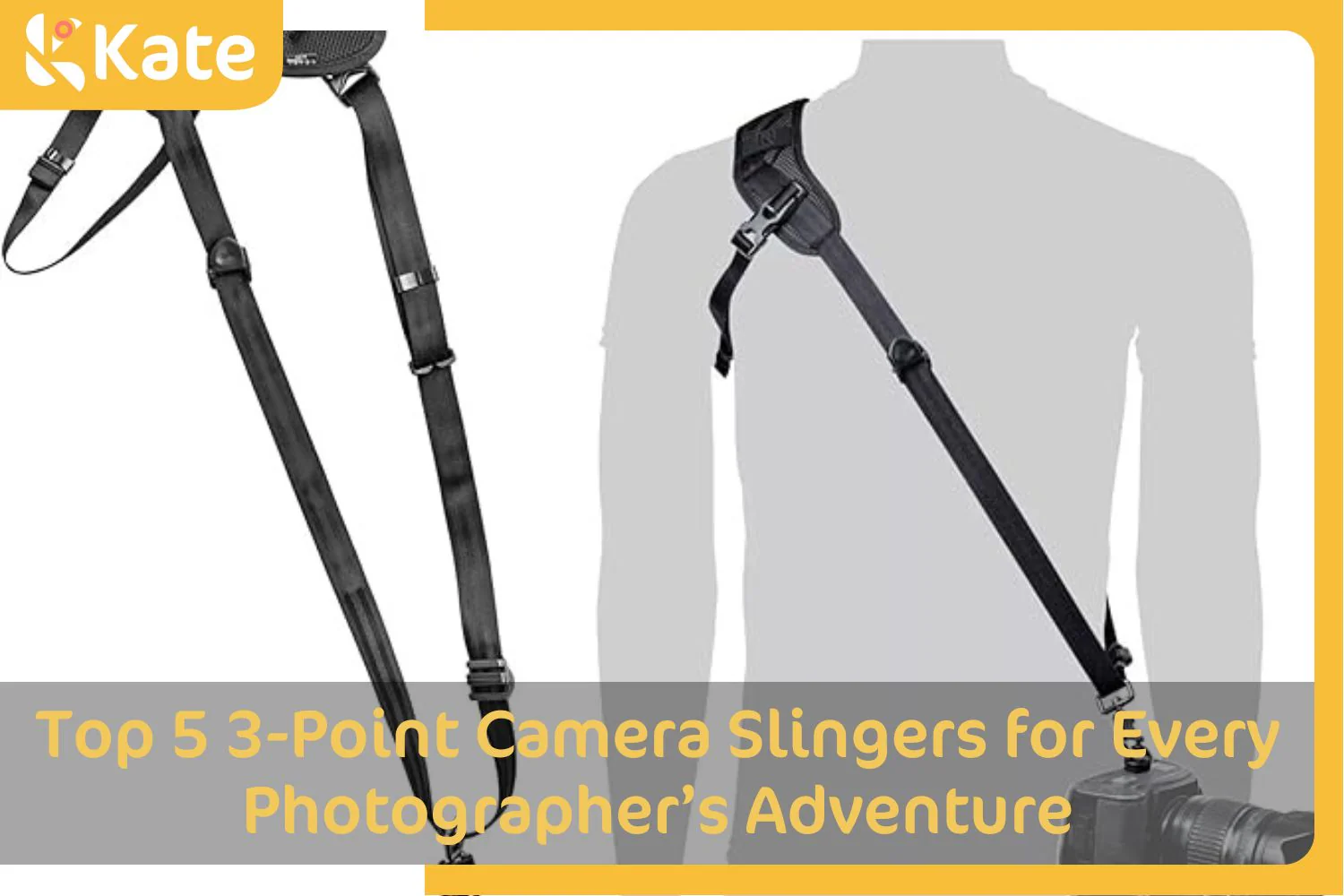Top 10 Camera Polarizer Lenses to Enhance Your Photography in 2023

Improve your photography with a camera polarizer lens. These filters reduce reflections, glare, and enhance color saturation and contrast. Our buying guide will help you choose the best camera polarizer lens for your needs. Discover key factors to consider and top product recommendations.
- Two Types of Camera Polarizer Lens
- Benefits of Using Polarizing Filter for Camera Lenses
- How to Choose Camera Polarizer Lens
- 10 Best Camera Polarizing Filters in 2023
- Bonus Tips:
- Conclusion
Two Types of Camera Polarizer Lens
1. Circular Polarizing Filter

Image Credit: amazon.com
Circular polarizer lens filters are great for all DSLR cameras, but linear ones aren't. They offer more versatility in what you can do and how things look. Although it is likewise sensitive to linearly polarized light, it allows circularly polarized light waves to flow through the lens.
A quarter-wave plate, an additional piece of glass, is placed behind a linear polarizer in a circular polarizing filter, which allows light to be polarized in a circular pattern.
2. Linear Polarizing Filter
Image Credit: amazon.com
There is only one polarizing layer in linear polarizing filters. The mirrors in DSLR cameras can cause light beams to become cross-polarized after they have traveled through them, which interferes with metering and autofocusing technologies.
Benefits of Using Polarizing Filter for Camera Lenses
1. Help with accurate metering.
When taking pictures in bright conditions, the metering system in your digital camera can be fooled by glare and reflections, resulting in underexposed images.
2. Reduce vignetting.
Vignetting happens when the corners of an image appear darker than the center. By reducing the amount of light that enters your lens, a polarizing lens filter can help to minimize vignetting and produce cleaner-looking images.
3. Increase color saturation.
The polarization effect helps to reduce the amount of reflected light, allowing the colors in the scene to appear more vibrant and saturated. This can be especially helpful when photographing landscapes or other outdoor scenes.
4. Benefit auto-focus shooting.
Polarizing filters can help reduce the amount of reflected light that auto-focus sensors need to consider.
5. Enable to use slower shutter speeds for water shots.
When photographing water photos, such as waterfalls photographs, you may need to use a slower shutter speed without overexposing the image. This is possible with a polarizing filter which allows less light transmission to enter the camera.
6. Reduce reflection when water involved.
When taking pictures of reflective surfaces, such as water or metallic surfaces, it's important to reduce the amount of light reflected in the camera lens. This can be done by using a polarizing camera lens filter, which helps absorb some light and reduce reflections. As a result, pictures taken with a polarizing filter will have less glare and be more evenly lit.
7. Boosting color by eliminate haze.
The amount of light bouncing off surfaces on a bright, sunny day can be overwhelming. But by using a polarizing effect on your camera lens, you can dramatically reduce the glare and reflections and bring out the true colors of the scene. The result is vibrant blue skies and sharper details.
8. Adjust the darkness of the sky for better effect.
In addition to boosting colors, a Polarizing filter can also be used to darken the sky to create a more dramatic effect, or rotate the filter for a more even sky when needed. So whether you're looking to add a pop of color to your photos or create stunning landscapes, a Polarizing filter is a must-have for any photographer.

Photo by William Bayreuther on Unsplash
How to Choose Camera Polarizer Lens
1. The Brand
Camera polarizing filters are not all created equal. There can be significant differences in quality between brands, so it's important to choose wisely when selecting a camera lens filter for your camera.
Some examples of brands that make camera polarizer lenses include Lee, Hoya, and Heliopan. Each brand has its strengths and weaknesses, so it's important to research to figure out which one is right for you.
2. Budget
Camera polarizing filters can range in price from around $20 to over $100, so it's important to figure out how much you're willing to spend before making a purchase.
If you're on a tight budget, it's probably best to stick with a less expensive option. However, if you're willing to spend a bit more money, you'll likely be able to find a higher-quality filter.
3. Diameter
Camera polarizing filters are available in various sizes, so it's important to choose one that is the right size for your camera lens. The most common sizes are 50mm, 58mm, and 65mm. If you're unsure what size of lens filter you need, you can generally find this information by looking up your digital camera model online.
4. Thickness
When it comes to polarizer lenses, thickness is an important consideration. A thicker lens will block more light, resulting in a darker photo. However, it will also provide better polarization, reducing glare and more saturated colors.
Thinner lenses, on the other hand, allow more light to pass through, resulting in a brighter photo in low-light conditions. However, they also provide less polarization, resulting in more glare and less saturated colors.
5. Type
Camera polarizing filters come in two different types: linear and circular. Linear filters are less expensive but can cause problems with autofocus and metering. Circular polarizer lens filters, on the other hand, are more expensive but don't have these issues.
10 Best Camera Polarizing Filters in 2023
1. Urth Circular Polarizer

Image Credit: amazon.com
Specifications
- Thread diameter range: 37mm-95mm
- Thickness: not specified
- Coating Description: Nano coating
- Photo Filter Effect Type:
- Water Resistance Level: Polarizer
Pros
- Very affordable
- Works smoothly
- Good glass polariser
Cons
- The lens is not clear
- Affects autofocus
2. Nikon 82 Circular Polarizer
Image Credit: amazon.com
Specifications
- Thread diameter range: none
- Thickness: not specified
- Coating Description
- Photo Filter Effect Type
- Water Resistance Level
Pros
- Easy to install and remove
- Free of distortions
- Has a smooth movement when adjusting the intensity
Con
- Expensive
3. Tiffen Circular Polarizer Filter
Image Credit: amazon.com
Specifications
- Thread diameter range:46mm- 82mm
- Thickness: 1.6mm-3mm
- Coating Description: Multi-coating
- Photo Filter Effect Type: color correcting, Polarizer
- Water Resistance Level: Water resistant
Pros
- Great for waterfall pictures
- The image quality is nice and sharp
Con
- Weak polarization in the filter
4. Cokin NX CPL Filter
Image Credit: amazon.com
Specifications
- Thread diameter range: none
- Thickness: Not specified
- Coating Description: Multi-coating
- Photo Filter Effect Type: Polarizer, Circular Polarizer
- Water Resistance Level: None
Pro
- Appropriate for wide lenses
Con
- Works with Cokin Nx series
5. Coking P- Series
Image Credit: amazon.com
Specifications
- Thread diameter range:48mm-82mm
- Thickness:1.6mm-3mm
- Coating Description: No coating
- Photo Filter Effect Type: Circular Polarizer
- Water Resistance Level: None
Pros
- Easy to use
- High-quality image
-
It has a great glass build
Con
- Doesn't easily spin in the filter holder
6. Hama Circular Polarizer
Image Credit: amazon.com
Specifications
- Thread diameter range:37mm-82mm
- Thickness:6mm
- Coating Description: Multi-coating
- Photo Filter Effect Type: Ultraviolet, circular Polarizer
- Water Resistance Level: None
Pros
- High-quality build
- Easy to adjust
Cons
- You cant use a lens hood
- Can be unscrewed
7. B+W Circular Polarizer Kaesemann
Image Credit: amazon.com
Specifications
- Thread diameter range:30.5mm-112mm
- Thickness:4.5mm
- Coating Description: Multicoating
- Photo Filter Effect Type: circular Polarizer
- Water Resistance Level: Water resistance
Pros
- It has an excellent glass
- Easy to attach and remove from the lens
Con
- Doesnt rotate easily
8. Lee Elements Circular Polarizer Filter
Image Credit: amazon.com
Specifications
- Thread diameter range:67mm-82mm
- Thickness: not specified
- Coating Description: Multi-layer coating
- Photo Filter Effect Type: Enhancing, Polarizer, Circular Polarizer
- Water Resistance Level: None
Pros
- Outstanding optical performance
- It comes packaged in a protective case rigid box
Con
- Expensive
9. Lee 100 Polarizer
Image Credit: amazon.com
Specifications
- Thread diameter range: 49mm-105mm
- Thickness:2mm
- Coating Description:none
- Photo Filter Effect Type: Circular
- Water Resistance Level: Water resistant
Pros
- Exceptional optical quality
- Snaps into position
Con
- Hard to remove
10. Marumi DHG Circular Polarizer
Image Credit: amazon.com
Specifications
- Thread diameter range:37mm-105mm
- Thickness:5mm
- Coating Description: Multi-coating
- Photo Filter Effect Type: Polarizer, Circular Polarizer
- Water Resistance Level: water and oil repellent coating
Pros
- Affordable
- It's well constructed
Con
- Difficult to rotate
Bonus Tips:
Polarizing filters are a great investment for any photographer, but there are a few things to keep in mind to get the most out of your purchase.
1. Make the Most of Your Expensive Polarizer Filter
As a landscape photographer, you know that investing in a polarizer filter is always a good idea. It helps you capture amazing landscape shots and enhances color saturation in a photo's skies and other bright areas. But did you know there are a few ways to make the most of your expensive polarizer filter?
Using a step-up ring allows you to use your polarizer filter on lenses of different diameters. This is handy if you have a variety of lenses and don't want to buy multiple filters. Plus, by using a step-up ring, you'll protect your filter from scratches and dirt.
Remember that polarizing filters can reduce the amount of light reaching your sensor, so choosing one with multi-coating is important to minimize this effect.
2. Tackle Unnatural Dark Sky
While shooting photos of the sky, you might encounter an unnatural-looking dark sky. This is because the blue sky results from polarizing light waves, and when you use a polarizer filter, it blocks some of these light waves.

Photo by Yann Allegre on Unsplash
So what can you do to fix this? If you have an adjustable polarizer filter, you can reduce the polarizing effect by rotating the filter. This will help make the sky look more natural and improve the overall photo.
3. Sharpen Cityscape Photos Even From a Window
Polarizer filters are one of the most popular filters used by photographers, especially those who shoot cityscapes. They work by reducing the amount of reflected light that enters the camera lens. This results in a sharper image, increased contrast, and more saturated colours.
Polarizers are especially effective when shooting through glass, such as windows. The glass will often reflect a lot of light, which can cause the image to appear washed out. Using a polarizer, the photographer can reduce the amount of reflected light and produce a much sharper, more vibrant image.
Polarizers can also be used to reduce the amount of glare on water or other shiny surfaces. This can be helpful when shooting cityscapes that include many buildings with reflective glass. Using a polarizer, the photographer can eliminate the glare and produce a more evenly-lit image.
Conclusion
Camera polarizing filters can be a great way to improve the quality of your photos. However, it's important to choose the right filter for your needs. Consider price, diameter, thickness, and type before making a purchase.
If you're not sure which filter is right for you, be sure to consult with a professional. With a little research, you'll surely find the perfect camera polarizing filter for your needs.



















 Boho
Boho












